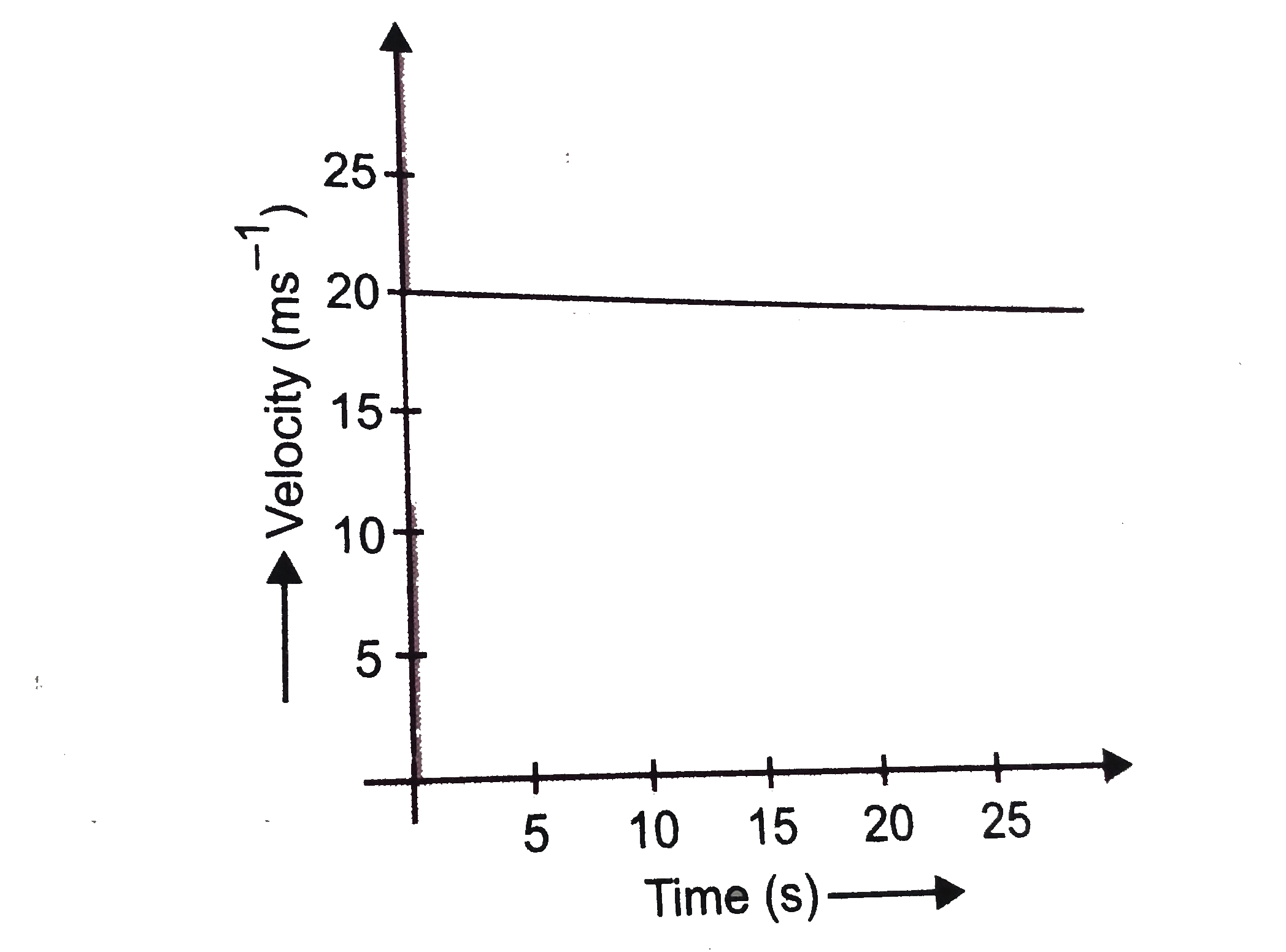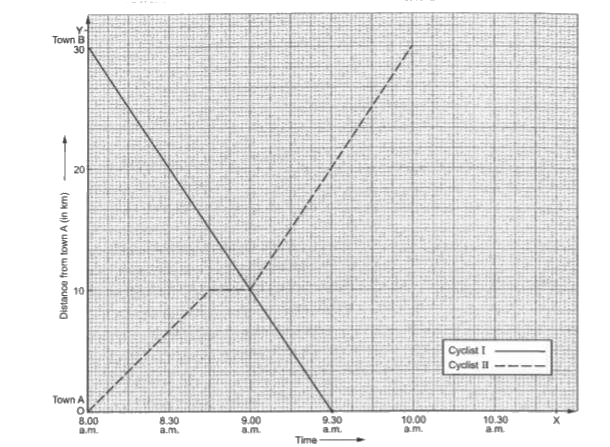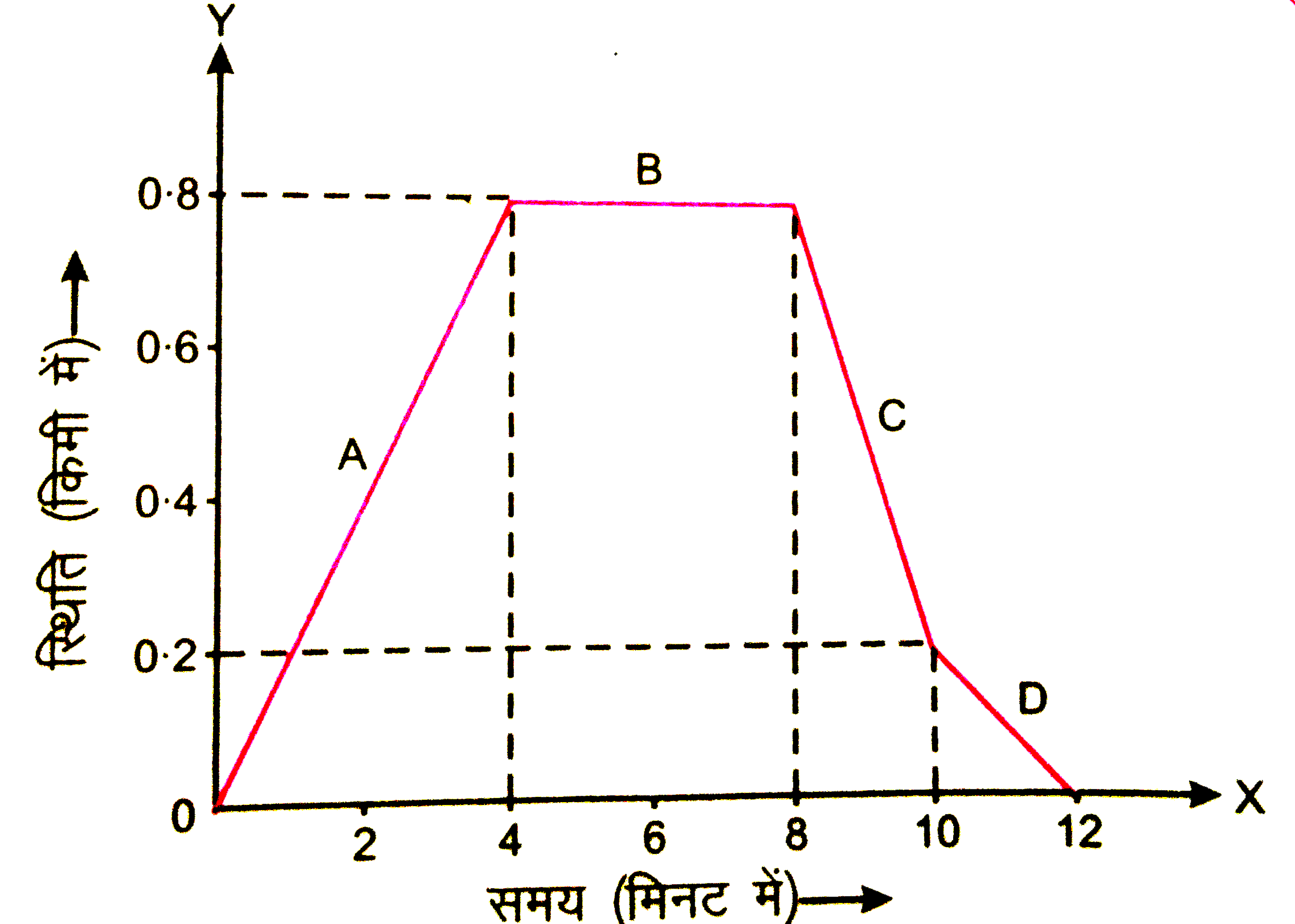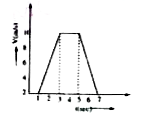The velocity-time graph Fig. 8.5 shows the motion of a cyclist. Find i its acceleration ii its velocity and iii the distance covered by the cyclist in 15 seconds.
i Since velocity is not changing acceleration is equal to zero. ii Reading the graph velocity = 20 m s-1 iii Distance covered in 15 seconds s = u ×t = 20 × 15 = 300 m
Related Solutions
The velocity-time graph shows the motion of a cyclist. Find (i) its acceleration (ii) its velocity and (iii) the distance covered by the cyclist in seconds.

View SolutionThe velocity-time graph shows the motion of a cyclist. Find (i) its acceleration (ii) its velocity and (iii) the distance covered by the cyclist in 15 seconds.
View SolutionThe velocity-time graph shows the motion of a cyclist. Find (i) acceleration (ii) its velocity (iii) the distance covered by the cyclist in 15 second
View SolutionThe velocity-time graph shows the motion of a cyclist. Find (i) acceleration (ii) its velocity (iii) the distance covered by the cyclist in 15 second
View SolutionThe velocity time graph shows the motion of a cyclist Find
 the distance covered by the cyclist in 15 seconds.
the distance covered by the cyclist in 15 seconds.
View SolutionThe velocity time graph shows the motion of a cyclist Find its acceleration.
View SolutionThe velocity time graph shows the motion of a cyclist Find its velocity.
View Solutionएक साइकिल सवार 100 मीटर की दूरी को 10 सेकण्ड में तय करता है। दूसरा साइकिल सवार 300 मीटर की दूरी को 25 सेकेण्ड में तय करता है किस साइकिल सवार की चाल अधिक है।
View SolutionPosition-time graph of a particle in motion is shown in fig. Calculate -

(i) Total distance covered
(ii) Displacement
(iii) Average speed
(iv) Average velocity.
View SolutionPosition-time graph of a particle in motion is shown in fig. Calculate - (i) Total distance covered (ii) Displacement (iii) Average speed (iv) Average velocity.
View SolutionThe graph given below shows the journeys done by two cycles, one journey from city A to city B and the other from city B to city A a) at what time cyclist II rested for how long did the cyclist rest b) after rest was cyclist II cycling faster or slower c) at what time both the cyclist met d) cyclist II covered the distance before meeting cyclist I e) cyclist II reached city A then how far cyclist I was in city B
View SolutionA cyclist acceleration from rest to a velocity of 72 km hr^(-1) in 10sec. If the cyclist is in straight track the acceleration of the cyclist is:
View SolutionFrom the velocity-time graph of uniformaccelerated motion deduce the equations of motion in (i) velocity and time (ii) distance and time (iii) disstance and velocity.
View SolutionThe following line graph shows the journey made by two cyclists, cyclist and cyclist , one from town to town and the other from town to town .

Study the above graph carefully and answer the questions given below :
At what time did cyclist rest ? For how long did the cyclist rest ?
Was cyclist cycling faster or slower after the rest ?
At what time did the two cyclists meet ?
How far had cyclist travelled when he met cyclist ?
When cyclist reached twon , how far was cylist from town ?
View SolutionA certain distance is covered by a cyclist at a certain speed. If a jogger covers half the distance in double the time, the ratio of the speed of the jogger to that of the cyclist is
View Solutionएक साइकिल सवार की यात्रा का वर्णन चित्र 3.38 में स्थिति - समय ग्राफ द्वारा प्रदर्शित है ज्ञात कीजिए :
भाग A तथा C में साइकिल सवार के वेग क्या है ? ये भाग क्या प्रदर्शित करते है

View SolutionHow can you represent (i) motion with uniform velocity, (ii) motion with uniform acceleration and (iii) motion with uniform retardation in a velocity time graph?
View SolutionDraw (i) position-time (ii) velocity-time and (iii) acceleration-time graph for the motion of an object under free fall.
View SolutionFor the velocity time graph shown in figure below the distance covered by the body in last two seconds of its motion is what fraction of the total distance covered by it in all the total distance covered by it in all the seven seconds

View SolutionFor the velocity - time graph shown in figure below the distance covered by the body in last two seconds of its motion is what fraction of the total distance covered by it in all the total distance covered by it in all the seven seconds
View Solution